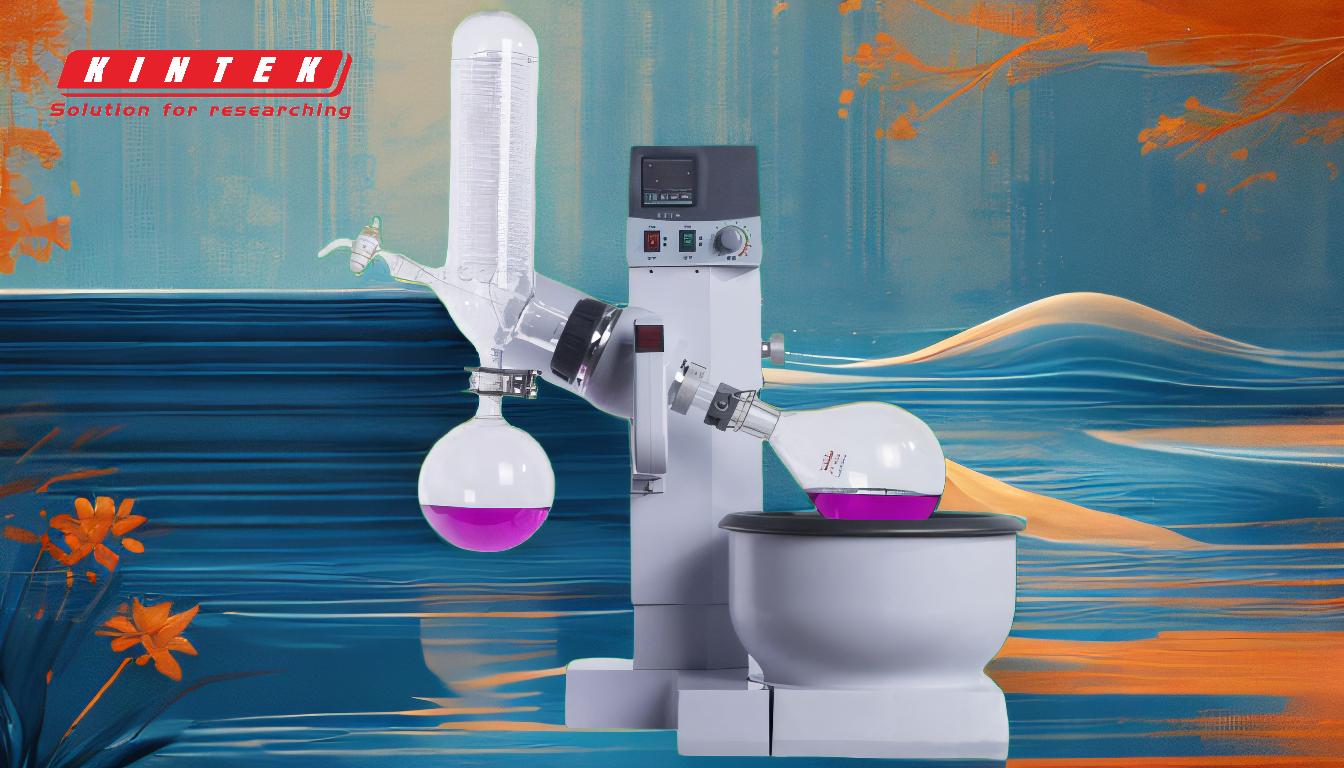When using a rotary evaporator, the round-bottomed flask should ideally be filled to no more than half its capacity. This ensures efficient and safe evaporation of the solvent, prevents bumping or spillage, and allows for proper mixing and rotation of the solution. Overfilling the flask can lead to operational issues, such as contamination, reduced evaporation efficiency, and potential safety hazards. For larger volumes, it is recommended to transfer the solution to a larger flask or evaporate in smaller portions. Proper setup, monitoring, and adherence to safety protocols are essential for optimal results.
Key Points Explained:

-
Optimal Flask Filling Capacity:
- The round-bottomed flask should be filled to no more than half its capacity when using a rotary evaporator. This ensures:
- Efficient evaporation: A partially filled flask allows for sufficient surface area for the solvent to evaporate.
- Prevention of bumping: Overfilling increases the risk of bumping, where the solution violently boils and splashes into the condenser, potentially contaminating the sample.
- Safe rotation: A half-filled flask ensures the solution is evenly distributed during rotation, reducing stress on the equipment.
- The round-bottomed flask should be filled to no more than half its capacity when using a rotary evaporator. This ensures:
-
Reasons for Avoiding Overfilling:
- Reduced evaporation efficiency: A full flask limits the surface area exposed to the vacuum and heat, slowing down the evaporation process.
- Risk of contamination: Overfilling can cause the solution to spill into the condenser or vacuum system, leading to cross-contamination.
- Equipment strain: Excessive liquid volume can strain the motor and vacuum pump, potentially damaging the rotary evaporator.
-
Handling Large Volumes:
- If the solution volume exceeds half the flask's capacity:
- Transfer to a larger flask: Use a flask with a higher volume rating to accommodate the solution.
- Evaporate in smaller portions: Divide the solution into smaller batches and evaporate sequentially.
- If the solution volume exceeds half the flask's capacity:
-
Operational Best Practices:
- Monitor the process: Keep an eye on the flask to ensure the solvent is evaporating smoothly and no bumping occurs.
- Adjust rotation speed: Control the rotation speed to optimize mixing and prevent splashing.
- Maintain vacuum pressure: Ensure the vacuum is properly set to lower the solvent's boiling point without causing excessive bumping.
-
Safety Considerations:
- Use a bump trap: A bump trap can prevent the solution from entering the condenser and contaminating the system.
- Secure connections: Use clips to secure the flask and bump trap to prevent accidental detachment.
- Ventilation: Operate the rotary evaporator in a well-ventilated area or under a fume hood to avoid exposure to toxic volatiles.
-
Post-Evaporation Steps:
- Release vacuum pressure: Once evaporation is complete, carefully release the vacuum to avoid sudden pressure changes that could damage the equipment.
- Clean equipment: Empty the solvent collection flask and clean the bump trap to prevent residue buildup.
By adhering to these guidelines, users can ensure safe, efficient, and effective operation of the rotary evaporator while maintaining the integrity of their samples and equipment.
Summary Table:
| Key Aspect | Details |
|---|---|
| Optimal Flask Filling | Fill to no more than half capacity for efficient evaporation and safety. |
| Avoid Overfilling | Prevents bumping, contamination, and equipment strain. |
| Handling Large Volumes | Use a larger flask or evaporate in smaller portions. |
| Operational Best Practices | Monitor evaporation, adjust rotation speed, and maintain vacuum pressure. |
| Safety Considerations | Use a bump trap, secure connections, and ensure proper ventilation. |
| Post-Evaporation Steps | Release vacuum carefully and clean equipment to prevent residue buildup. |
Need help optimizing your rotary evaporator setup? Contact our experts today for personalized advice!










